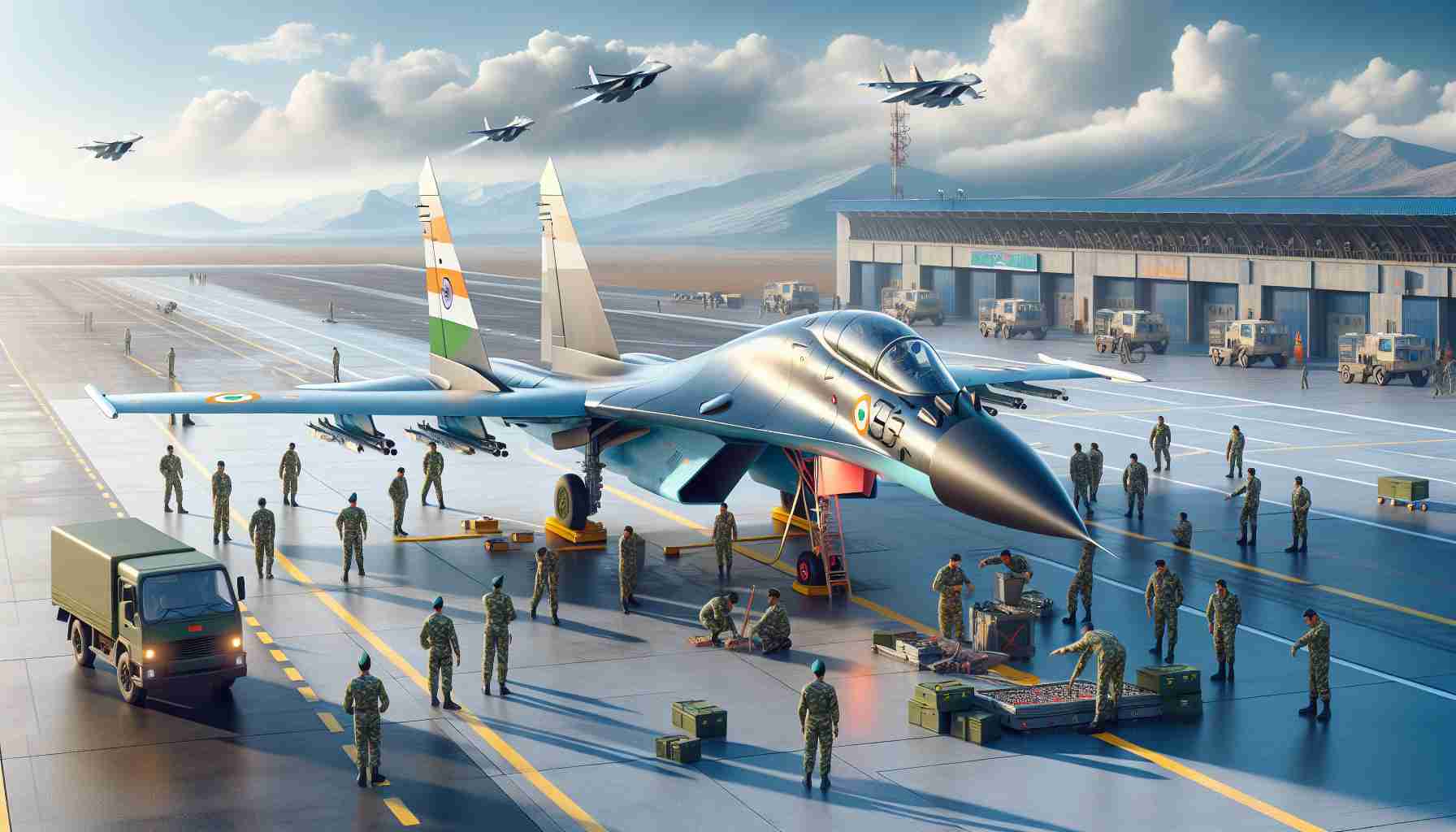- India is reevaluating its defense strategy amid geopolitical changes, particularly regarding fighter jet acquisitions.
- The Su-57 Felon, Russia’s stealth fighter, presents both opportunity and challenges for India due to complex international relations.
- India’s historical defense ties with Russia are being tested as the country shifts towards Western technology and military partnerships.
- The U.S. offers advanced military hardware, raising competition for the Su-57 and potentially complicating U.S.-India relations.
- India’s decision on the Su-57 will have significant implications for its military capabilities and regional power dynamics.
Amid swirling geopolitical currents, India stands at a crossroads in its defense strategy that could reshape its alliances and military capabilities. The Su-57 Felon, Russia’s much-anticipated stealth fighter jet, beckons, yet a myriad of complexities complicate India’s potential acquisition.
Historically, India has maintained robust ties with Russia, collaborating on significant projects like the BrahMos missile and Su-30MKI. However, a notable shift toward Western defense technology has emerged. U.S. military sales, including the P-8 Poseidon, Apache helicopters, and possible F-21 fighters, pose a substantial challenge to any Su-57 deal. The U.S.’s previous leniency regarding India’s S-400 purchase may not extend to the Su-57, heightening the stakes.
The Su-57 itself remains a gamble. With limited combat success reports and production issues plaguing Russia, India’s hesitation is palpable. The U.S. boasts hundreds of F-35 aircraft, and India’s military strategy begs the question: does the Su-57 have enough support to stand against such formidable rivals?
Moreover, acquiring the Su-57 could strain India’s budding relationship with the U.S., which has blossomed thanks to military collaborations and defense purchases. As India navigates this intricate web of international relationships, its future fighter jet choice may well define its place on the global stage.
In this defining moment, the key takeaway is clear: India’s defense decisions will not only impact its military readiness but also the intricate balance of power in the region. Keep an eye on the skies, as the game of aerial chess unfolds.
The Su-57 Dilemma: Will India Embrace the New Stealth Challenger?
India’s Defense Strategy: A New Crossroad
India’s defense strategy is increasingly influenced by geopolitical dynamics. As it considers the Su-57 Felon, several new developments and insights merit attention:
Market Trends and Innovations
– Emergence of Indigenous Capabilities: India is intensifying its focus on indigenous defense production, developing aircraft like the Tejas and the advanced Medium Weight Fighter (MWF). This could alter its dependence on foreign technology and impact decisions about the Su-57.
– Defense Spending Surge: India has ramped up its defense budget, projected to exceed $73 billion in the next fiscal year (2024-2025). This increase aims to modernize its armed forces amidst regional tensions.
Security Aspects
– Cybersecurity Integration: India’s military modernization plan includes significant investments in cybersecurity and electronic warfare capabilities, essential for operating fifth-generation fighter jets like the Su-57.
– Importance of Joint Operations: Integration of advanced models into the Indian Air Force (IAF) mainly depends on joint operational capabilities with Western allies, especially the U.S.
Pros and Cons of Acquiring the Su-57
Pros:
– Strategic Independence: The Su-57’s features could provide India with a degree of operational flexibility away from Western reliance.
– Enhanced Combat Capabilities: Assuming the jet’s developmental issues are resolved, the Su-57 promises advanced stealth and supercruise capabilities critical for modern warfare.
Cons:
– Production Delays: Ongoing production challenges in Russia raise doubts about delivery timelines and availability.
– Geopolitical Repercussions: Ties with the U.S. could be jeopardized, impacting broader defense collaborations and military aid.
Key Insights and Market Forecast
– Geopolitical Landscape: India’s military procurement decisions could shift the balance of power in South Asia, especially concerning China and Pakistan.
– U.S. Influence: The growing U.S.-India defense partnership may push India toward F-35 or other Western platforms, making the Su-57 less viable.
Frequently Asked Questions
1. What benefits could the Su-57 offer to India’s defense capabilities?
The Su-57, if operationally viable, can provide India with next-gen stealth capabilities, advanced avionics, and superior maneuverability, which can enhance the IAF’s performance against traditional rivals.
2. How are India’s defense ties with the U.S. shaping its aircraft acquisition strategy?
India’s defense evolution is increasingly aligned with U.S. standards, impacting its procurement decisions. Acquiring Western systems may lead to better interoperability and closer strategic ties, potentially sidelining the Su-57.
3. What is the likelihood of India compromising its relationships with established partners by choosing the Su-57?
Choosing the Su-57 might raise tensions with the U.S., especially given ongoing military cooperation. India will have to balance the Su-57’s tactical advantages against the strategic benefits of continued U.S. collaboration.
Conclusion
India’s decision regarding the Su-57 Felon is far from straightforward. Its choice will have lasting implications for its defense posture, regional stability, and global alliances. As India stands at this threshold, stakeholders must watch closely how this aerial chess game unfolds.
For more insights, visit Defense.gov.
